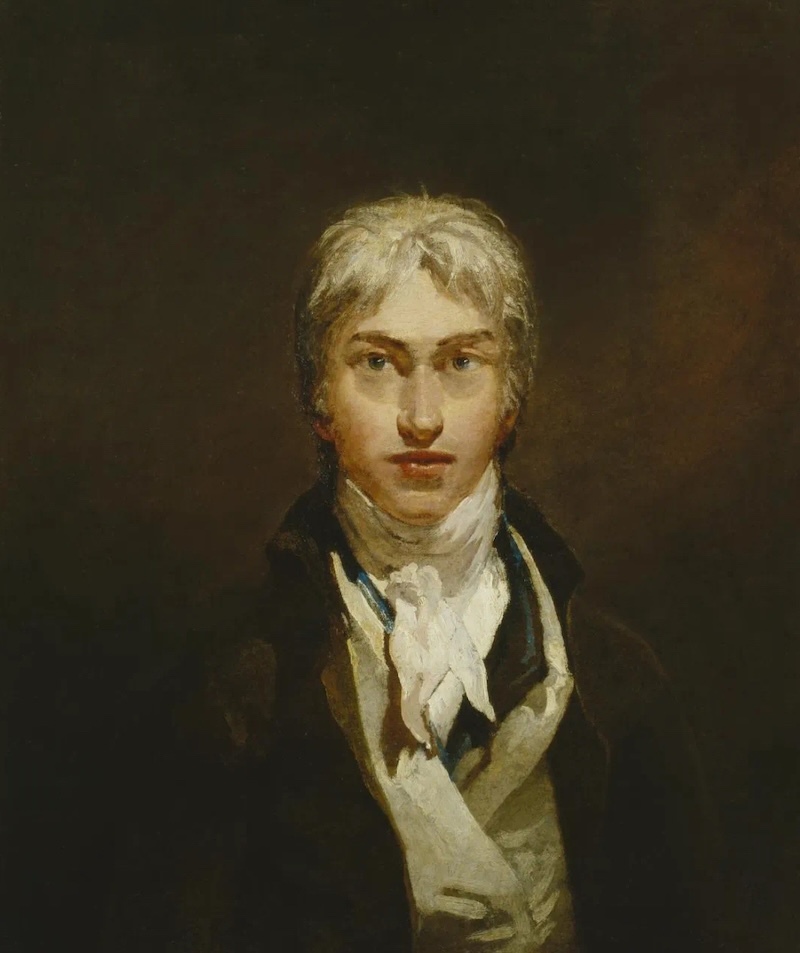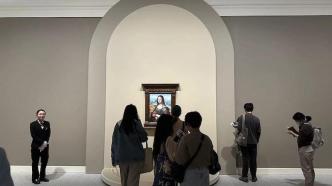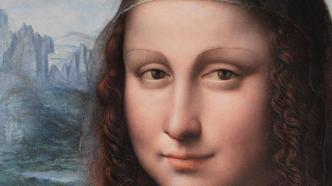
250 years ago today (April 23, 1775), a boy was born in Covent Garden, London. He was William Turner, known as the "Painter of Light" and also regarded as the first modern painter in the West. He had a great influence on the development of Impressionist painting. In Shanghai, the exhibition "Dialogues with Turner: Evoking the Sublime" from the British Tate Gallery is being exhibited at the Pudong Art Museum.
This revered artist created groundbreaking scenes of gods, legends and lost civilizations, but most importantly, his work represents the complex soul of Britain. 250 years later, why is Turner still considered one of Britain's best artists?

Turner Self-Portrait, 1799 (Turner's portrait is featured on the 2020 British Pound banknote)
Joseph Mallord William Turner (April 23, 1775 - December 19, 1851) never crossed the Atlantic Ocean or sailed the Aegean Sea. For Turner, a ferry trip across the English Channel was enough to let him appreciate the greatness and magnificence of the sea. In 1803, his painting "Calais Pier" recorded his feelings when he first arrived in France. The turbulent green waves in the painting seemed to be about to swallow up the fragile wooden pier where British passengers were expected to disembark. He was fascinated and terrified by the sea. This body of water has a strong inherent power, but it is always changing, dissolving, eroding...

Turner, Calais Dock, 1803, National Gallery, London
2025 is the 250th anniversary of Turner's birth. The one-year "Turner 250" commemorative activities are being carried out one after another. London's Tate Britain, Turner Contemporary, Manchester Whitworth Art Gallery, National Gallery of Scotland, and the Yale Center for British Art, the place with the largest collection of Turner's works in the United States, are all launching or will launch Turner special exhibitions. In particular, in November this year, the Tate will launch the "Turner and Constable" exhibition, which will allow Turner to compete with his greatest rival Constable.

Turner, The Blue Rigi, Sunrise, 1842, watercolor on paper, Tate Modern, London (on view at Pudong Art Museum until May 10)
In Shanghai, the exhibition "Dialogues with Turner: Evoking the Sublime" from the British Tate Gallery is being exhibited at the Pudong Art Museum. The exhibition juxtaposes 80 classic works of Turner with works by contemporary artists, reinterpreting the aesthetic concept of "sublime" in the intersection of ancient and modern times. This is a rare opportunity for Chinese audiences to face Turner's brushstrokes directly. In particular, the watercolor works will be returned to the Tate warehouse after the exhibition ends and enter a "dormant period" of ten years.

The exhibition "Dialogue with Turner: Echoes of the Sublime" at Pudong Art Museum. Turner's watercolor painting depicting moonlight presented in "Overture to a Dark Room"
Why is Turner, who was born 250 years ago in the spring, still Britain's greatest artist? Part of the reason may be that Turner was deeply aware of the fact that for Turner, Britain was an island nation, surrounded by terrors and adventures. One step away, you enter the dangerous world of the sea. In the Iveagh Seapiece, fishermen are hauling their fishing boats onto the beach, and a wall of waves is rushing towards them. A fishing boat is still floating in the turbulent waters, so close to the shore, but still full of dangers.

Turner, Seascape of Yves (Coastal Scene with Fishermen Pulling Their Boats Ashore)
Although Turner grew up on an island, his imagination went beyond it. His work encompassed lost civilizations and ancient myths, mountains he crossed and seas he never set foot on. Since the outbreak of the French Revolution in 1789, the political situation in Europe had become turbulent, and the war trapped Britain behind the "wooden walls" of the Royal Navy. When a brief period of peace came, the young landscape painter seized the opportunity to travel, watching the wine festival in Macon in eastern France and marveling at Mont Blanc - according to the paintings he showed the following year. He had already depicted the legendary Italy before he saw the continent with his own eyes. Throughout his life, he continued to make pilgrimages to European painters, traveling to Venice, Rome, Heidelberg and the St. Gotthard Pass.

Turner, The Bridge of Sighs, the Doge's Palace and the Custom House, Venice: Canaletto at Work, 1833, oil on mahogany, Tate Modern, London (until May 10 at the Pudong Art Museum)
Because of the difficulty of transportation, Britain in the 18th century felt much larger than it does today. Every distance seemed wider, every road felt longer. It took days to get from London to Chester, Newcastle or Exeter. It seemed that at the end of the lane there was an unexplored land. When the young Turner began his sketching trips (to Wales in 1792, to the north of England in 1797), it was like traveling through a mysterious land.

Turner, The Needle of Thakur, Looking Upward from the Sea of Ice, Tate Modern, London (Exhibited at Pudong Art Museum until May 10)

The exhibition site of "Conversation with Turner: Echoes of the Sublime" at Pudong Art Museum, with Turner's sketchbooks on display
Turner travelled around England and Europe, returning with full sketchbooks and painting in his London studio. He showed incredible artistic talent and was accepted by the Royal Academy of Arts in London at the age of 14. He never experienced failure, and once his career took off, he no longer had to worry about poverty. He was an artistic peak, leaving behind a large number of drawings, watercolors, prints and paintings, many of which were bequeathed to Britain when he died in 1851. However, apart from his works, you can hardly tell anything about his personal life and character from his work - he built a house near the Thames and continued to work; he eventually settled in Chelsea with his lover Sophia Booth, and died there with a view of the Thames. His soul was hidden in his art.

Turner, Hail the Whaler Erebus, Another Big Fish!, Tate Modern, London (on view at Pudong Art Museum until May 10)
Turner showed the world the land of England, but he didn’t make it up entirely. In his golden-yellow watercolor of Durham, painted around 1835, he turned the cathedral and the Norman-style building with its twin towers at a 45-degree angle to make it fit better, and gave it the golden sunlight of an Italian landscape. But he also recorded the real scene. On the bridge in the foreground, a few small figures, perhaps tired travelers, looking up at the dazzling cathedral, looking for food, work, shelter. This is his message: We may think we live in an oppressive, unjust time, but look up and see the light, and you can be lifted by the sudden beauty and illuminated by the glow of hope.

Turner, Durham, c. 1835, National Gallery of Scotland
His vision of the world is full of the opposition between tragedy and possibility, from everyday observation to bloody myth. In his 1811 painting Apollo and Python, the Greek sun god of light and reason has just slain a giant python, a symbol of irrationality. But it is a hollow victory, as we can see other twisted, serpentine monsters still lurking in the tangled woods. In one of his greatest mythological paintings, Ulysses Deriding Polyphemus: Homer's Odyssey, a seascape off the coast of Sicily is lit up by fire and smoke, with the Cyclops Polyphemus roaring on Mount Etna while the Greek hero Ulysses and his crew escape the blinded monster with laughter. But the burning sky is not a true symbol of freedom, but a false promise. Polyphemus calls on his father, Poseidon, for revenge: the sea god will devour Ulysses's crew and delay his journey home.

Turner, Apollo and the Python, 1811, Tate Modern, London (on view at Pudong Art Museum until May 10)
Why was Turner so familiar with classical culture? Although it is easy to regard him as a working-class hero because of his identity as a barber's son, he was not outside the elite culture. He grew up in an era when commercial competition and artistic innovation went hand in hand. The works of William Hogarth (1697-1764), Thomas Gainsborough (1727-1788), George Stubbs (1724-1806), Joseph Wright (1734-1797) and others brought vitality to British art.
As a student at the Royal Academy of Arts, he needed to learn painting from plaster models of classical art, and also absorb the academic thinking of contemporary artists such as Richard Wilson (1713-1782) and Joshua Reynolds (1723-1792). Turner lived in an era of highly developed art, where art was not only about imparting skills, but also about learning ideas, culture and history.

Turner, The Story of Apollo and Daphne, Tate Modern, London (on view at Pudong Art Museum until May 10)
Turner's time was also the age of Romanticism, when nature was worshipped as a religion. He began participating in the Royal Academy's Summer Exhibition in the 1790s, and poets of the period were also experimenting with folk forms to celebrate the joys of nature. In 1798, William Wordsworth and Samuel Taylor Cole compiled the Lyrical Ballads, which included "The Rhyme of the Ancient Mariner" and "A Few Miles Above Tintern Abbey". Turner's early art is clearly closely linked to the Romantic generation. In the same year that the Lake District poets broke through, he cleverly exhibited his work "Morning Amongst the Coniston Fells, Cumberland".

Turner, Morning on Coniston Hill, Cumberland, Tate Britain (on view at Pudong Art Museum until May 10)
As a conscious romantic, he identified with the theories of "picturesque" and "sublime" and considered his works to be poetic expressions. Landscape painting had developed in the 17th century, but it was given new meaning in the Romantic era because nature became the carrier of ideals, and even in Beethoven's Pastoral Symphony, music also depicted the landscape.

Turner, Sea and Sky, Tate Modern, London (on view at Pudong Art Museum until May 10)
Turner did not identify with Wordsworth’s modest voice. His hero was Byron, the most aristocratic, cool, and radical of the Romantic poets. He even wrote a Byronic poem, “The Fallacies of Hope.” Like Byron’s Childe Harold (from Childe Harold’s Travels), he would travel to Venice and other Italian cities, seeking to paint in a style that blended travel reports with political polemics. His painting of the aftermath of the Battle of Waterloo depicts a morass of slaughtered bodies lit by flashlights at night, accompanied by Byron’s description of the scene: “The earth is thick with dirt/ Which will be covered with her dirt, and piled into graves/ Knights and horses—friends and foes—mixed together, buried in one bloody funeral!” His identification with the poet shows the kind of artist he wanted to be: political, adventurous, and passionate at heart.

Turner, An Avalanche in Graubünden, Tate Modern, London (until May 10 at Pudong Art Museum)
Turner was a painter of time as well as light. He could make you marvel at the antiquity of rocks and buildings, and feel how they had withstood the test of time. The theme of history as survival runs through his paintings of Caernarfon Castle and the Roman Forum. Yet he could also depict the suddenness of destruction, the instantaneous destruction of landscapes that had remained unchanged for hundreds of years.

Turner, Caernarfon Castle, circa 1798, Tate Gallery, London
When the Houses of Parliament in London caught fire in 1834, he painted the scene, the red flames reflected in the Thames, and the crowds of onlookers, showing centuries of history reduced to ash and the medieval heart of English government destroyed. But did his paintings of the event mourn the disaster or celebrate new beginnings? Turner may have loved the past, but he was more excited by change - even the fire that consumed the old order.

Turner, The Fire of the Houses of Parliament (Distant View), William Turner, 1834-1835, Cleveland Museum of Art

Turner, The Fire of the Houses of Parliament (Close-up), William Turner, 1834-1835, Philadelphia Museum of Art
This paradoxical view of history is why Turner’s 250th anniversary is so important. The years of his birth and death are particularly significant. Born into a pre-industrial world, he lived until 1851, the year of the first Great Exhibition, a celebration of the industrial might of Victorian Britain. The French Revolution and the wars it led to figure prominently in his early art. But he also witnessed the Industrial Revolution, and found new energy in it. For Turner, industry was not simply “destruction” but the unleashing of natural forces (which, from a scientific point of view, is exactly what it was). In Staffa, Fingal’s Cave, steam rules the waves, and the painting revels in the paradox of visitors being able to see an ancient natural wonder by steamboat, via a modern technological marvel.

Turner, Fingal's Cave, Staffa, 1832, Yale Center for British Art
This collision of the vanishing past and the bright future is captured in his painting The Fighting Temeraire, 1839. The world of Turner’s youth has vanished: one of its last relics, a ship of the line that fought at Trafalgar, is being towed to its final resting place, against a backdrop of shimmering bronze waters that rival any of his mythological seas.

Turner, The Fighting Temeraire, 1839, National Gallery, London
The Thames was the first river Turner had ever seen. Its tides gave him his first taste of the mystery and instability of water. Nothing is solid here, no protector. On his deathbed, Turner is said to have said: “The sun is God!” If that is so, then the sea is the devil. Since it was first exhibited in 1840, Slavers Throwing Overboard the Dead and Dying (The Typhoon Comes) has been considered his greatest masterpiece. The father of the Victorian art critic John Ruskin bought it for his son, and Ruskin revered the work but could not bear to be with it, not least because of its human content. This is Turner’s most heartbreaking sky, stained with bloody crimson and purple, its eerie glow infecting those green waves where strange fish swarm. And then there are the humans: legs and arms in the water, weighed down by iron fetters and chains. It is not the sky and the sea, after all, that are sick, but the human society represented on the ship. Nature is neither sacred nor cursed. What about humans?

Turner, Slaves Thrown into the Sea, the Dead and the Dying (also known as The Typhoon), 1840
What is Turner's legacy? You could call him the Rembrandt of the sea, or the Leonardo of the landscape - he had the universality and complexity of those artists. Occasionally, critics have called Constable more sincere, or thought Turner's huge output was grandiose and eccentric.

Turner, Moonlight, Study for Millbank, 1797, oil on mahogany panel, Tate Modern, London (until May 10 at Pudong Art Museum)
But Turner knew what he was doing. He wanted his paintings to simultaneously touch the soul, stimulate the senses, and challenge people’s minds with profound reflections on history, politics, and even time and space. When the Hubble Space Telescope and now the Webb Telescope began sending back data, NASA transformed it into the smoky, sublime images of deep space that we now use to navigate our universe. What do these romantic nebulae most resemble? Turner’s paintings, of course.

Turner, Rough Sea with Dolphins, circa 1835-1840, oil on canvas, Tate Modern, London (exhibited at Pudong Art Museum until May 10)
Note: This article is translated from Jonathan Jones's art review on the 250th anniversary of Turner's birth. The Pudong Art Museum's "Conversations with Turner: Echoes of the Sublime" exhibition will run until May 10, 2025.


